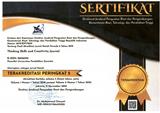Dilema Moral Teknik “Three-Parents-Baby” pada Mitochondrial Replacement Therapy
DOI:
https://doi.org/10.23887/jfi.v6i2.53689Keywords:
Deontologi, Mitochondrial replacement therapy, Teleologi, Value-bond, Value-freeAbstract
Penyakit mitokondria merupakan salah satu penyakit maternal yang belum dapat disembuhkan. Salah satu cara untuk menurunkan angka penyakit mitokondria yaitu melalui terapi pengganti mitokondria (Mitochondrial Replacement Therapy). Artikel ini bertujuan untuk membahas teknik Mitochondrial Replacement Therapy (MRT) dari aspek moral melalui kajian teoritis dari berbagai referensi yang sesuai. Menghindari terjadinya dehumanisasi terhadap penerapan teknik MRT, maka teknik MRT terikat oleh nilai (value-bound) yang diatur melalui berbagai kebijakan pemerintah. Selanjutnya, teknik MRT dapat dipandang dari paham deontologi dan paham teleologi. Paham deontologi dalam teknik MRT memberikan rekomendasi cara yang baik dalam melaksanakan MRT melalui aturan kebijakan pemerintah. Di sisi lain, paham teleologi mengarahkan teknik MRT hanya boleh diberikan kepada pasien dengan tujuan untuk mencegah penularan penyakit mitokondria yang parah. Kedepannya dapat dilakukan pengkajian perkembangan teknik MRT dari waktu ke waktu ditinjau dari perkembangan gagasan ilmiah. Perkembangan gagasan ilmiah yang diangkat mulai dari perkembangan rekayasa genetika, munculnya fertilisasi in-vitro sampai kepada pengembangan teknik fertilisasi in-vitro.
References
Alleyne, R. (2009). “Three Parent Babies” Take a Step Closer to Reality. https://www.telegraph.co.uk/news/health/news/6546448/Three-parent-babies-take-a-step-closer-to-reality.html.
Aman. (2015). Kloning Manusia dan Masalah Sosial-Etik. DIMENSIA: Jurnal Kajian Sosiologi, 1(1), 1–21. https://doi.org/10.21831/dimensia.v1i1.3393.
Barritt, J. A., Willadsen, S., Brenner, C., & Cohen, J. (2001). Cytoplasmic transfer in assisted reproduction. Human Reproduction Update, 7(4), 428–435. https://doi.org/10.1093/humupd/7.4.428.
Baylis, F. (2013). The Ethics of Creating Children with Three Genetic Parents. Reproductive BioMedicine Online, 26(6), 531–534. https://doi.org/10.1016/j.rbmo.2013.03.006.
Bowden, T. (2017). Three-parent babies: Calls to allow controversial Mitochondrial Donation procedure in Australia.
Check, E. (2005). Gene Study Raises Fears for Three-Parent Babies.
Chen, S. H., Pascale, C., Jackson, M., Szvetecz, M. A., & Cohen, J. (2016). A limited survey-based uncontrolled follow-up study of children born after ooplasmic transplantation in a single centre. Reproductive BioMedicine Online, 33(6), 737–744. https://doi.org/10.1016/j.rbmo.2016.10.003.
Claiborne, A., English, R., & Kahn, J. (2016). Mitochondrial Replacement Techniques: Ethical, Social, and Policy Considerations. In Mitochondrial Replacement Techniques: Ethical, Social, and Policy Considerations. https://doi.org/10.17226/21871.
Connor, S. (2013). UK becomes first country in world to approve IVF using genes of three parents. https://www.independent.co.uk/news/science/uk-becomes-first-country-in-world-to-approve-ivf-using-genes-of-three-parents-8677595.html.
Craven L., Tuppen, H.A, Greggains, G.D., Harbottle, S.J., Murphy, J.L., Cree, L.M., Murdoch, A.P., Chinnery, P.F., Taylor, R.W., Lightowlers, R.N., & Herbert, M. T. D. (2010). Pronuclear Transfer in Human Embryos to Prevent Transmission of Mitochondrial DNA Disease Nature. Pubmed Central, 465(7294), 1–12. https://doi.org/10.1038/nature08958.Pronuclear.
Dale, B., Wilding, M., Botta, G., Rasile, M., Marino, M., Di Matteo, L., De Placido, G., & Izzo, A. (2001). Pregnancy After Cytoplasmic Transfer in a Couple Suffering from Idiopathic Infertility. Human Reproduction, 16(7), 1469–1472.
Davies, P. (2000). The Relevance of Systematic Reviews to Educational Policy and Practice. Oxford Review of Education, 26(3–4), 365–378. https://doi.org/10.1080/713688543.
Davison, J., Lemonde, H., & Rahman, S. (2019). Inherited mitochondrial disease. Paediatrics and Child Health (United Kingdom), 29(3), 116–122. https://doi.org/10.1016/j.paed.2019.01.009.
Dimauro, S. (2011). A History of Mitochondrial Diseases. Journal of Inherited Metabolic Disease, 34(2), 261–276. https://doi.org/10.1007/s10545-010-9082-x.
Firman, H. (2019a). Kepastian dan Ketidakpastian Dalam Sains. Jurnal Filsafat Indonesia, 2(1), 33. https://doi.org/10.23887/jfi.v2i1.17549.
Firman, H. (2019b). Pengantar Filsafat Ilmu Pengetahuan Alam. Sekolah Pascasarjana Universitas Pendidikan Indonesia.
Frith, M. (2003). Ban on Scientists Trying to Create Three-Parent Baby.
Gallagher, J. (2015). UK Approves Three-Person Babies. https://www.bbc.com/news/health-31594856.
Gallagher, J. (2016). Babies Made from Three People Approved in UK.
Gorman, G. S., Schaefer, A. M., Ng, Y., Gomez, N., Blakely, E. L., Alston, C. L., Feeney, C., Horvath, R., Yu-Wai-Man, P., Chinnery, P. F., Taylor, R. W., Turnbull, D. M., & McFarland, R. (2015). Prevalence of Nuclear and Mitochondrial DNA Mutations Related to Adult Mitochondrial Disease. Annals of Neurology, 77(5), 753–759. https://doi.org/10.1002/ana.24362.
Green BN, Johnson CD, A. A. (2006). Writing Narrative Literature Reviews for Peer-Reviewed Journals: Secrets of The Trade. J Chiropr Med, 5(3), 101–117. https://doi.org/10.1162/ling_a_00246.
Halimah, M. (2018). Pandangan Aksiologi Terhadap Surrogate Mother. Jurnal Filsafat Indonesia, 1(2), 51. https://doi.org/10.23887/jfi.v1i2.13989.
Hidayat, A. (2022). Problematika Bayi Tabung Menurut Fiqih Kontemporer. Proceeding IAIN Batusangkar, 1(1), 669–674. https://ojs.iainbatusangkar.ac.id/ojs/index.php/proceedings/article/view/7196.
Kemenkes RI. (2010). PMK No. 039 ttg Penyelenggaraan Pelayanan Reproduksi Berbantu.pdf.
Kolling Institute. (2022). Australia to Introduce Ground Breaking Technology to Target Debilitating Mito disease. https://kollinginstitute.org.au/australia-to-introduce-ground-breaking-technology-to-target-debilitating-mito-disease.
Maksum, I. P., Alchumaira, S. F., Kamara, D. S., Rachman, S. D., & Komalaningsih, S. (2015). The Relation of Mitochondrial DNA Mutation with Mitochondrial Diseaseas in Coding Region. Procedia Chemistry, 17, 84–92. https://doi.org/10.1016/j.proche.2015.12.110.
Naik, G. (2012). DNA Switch Shows Promise Against Genetic Disease. https://www.wsj.com/articles/SB10001424052970204076204578076530392342640.
Pike, G. K. (2022). The benefits, Risks and Alternatives of Mitochondrial Replacement Therapy – Bringing Proportionality into Public Policy Debate. Clinical Ethics, 1–16. https://doi.org/10.1177/14777509221091097.
Suriasumantri, Y. . (2009). Filsafat Ilmu: Sebuah Pengantar Popular. Pustaka Sinar Harapan.
Suryanti, E. (2019). Tinjauan Etika terhadap Kloning Manusia. Titian Ilmu: Jurnal Ilmiah Multi Sciences, 11(1), 10–19. https://doi.org/10.30599/jti.v11i1.354.
Sylvester, A., Tate, M., & Johnstone, D. (2013). Beyond Synthesis: Re-Presenting Heterogeneous Research Literature. Behaviour and Information Technology, 32(12), 1199–1215. https://doi.org/10.1080/0144929X.2011.624633.
Tingley, K. (2014). The Brave New World of Three-Parent I.V.F.
Wiranata, A. A. G. (2021). Bayi Tabung dalam Perspektif Agama Hindu. Widya Katambung: Jurnal Filsafat Agama Hindu, 12(1), 45–55.
Downloads
Published
Issue
Section
License
Copyright (c) 2023 Jurnal Filsafat Indonesia

This work is licensed under a Creative Commons Attribution-ShareAlike 4.0 International License.

Jurnal Filsafat Indonesia Undiksha is licensed under a Creative Commons Attribution-ShareAlike 4.0 International License.



